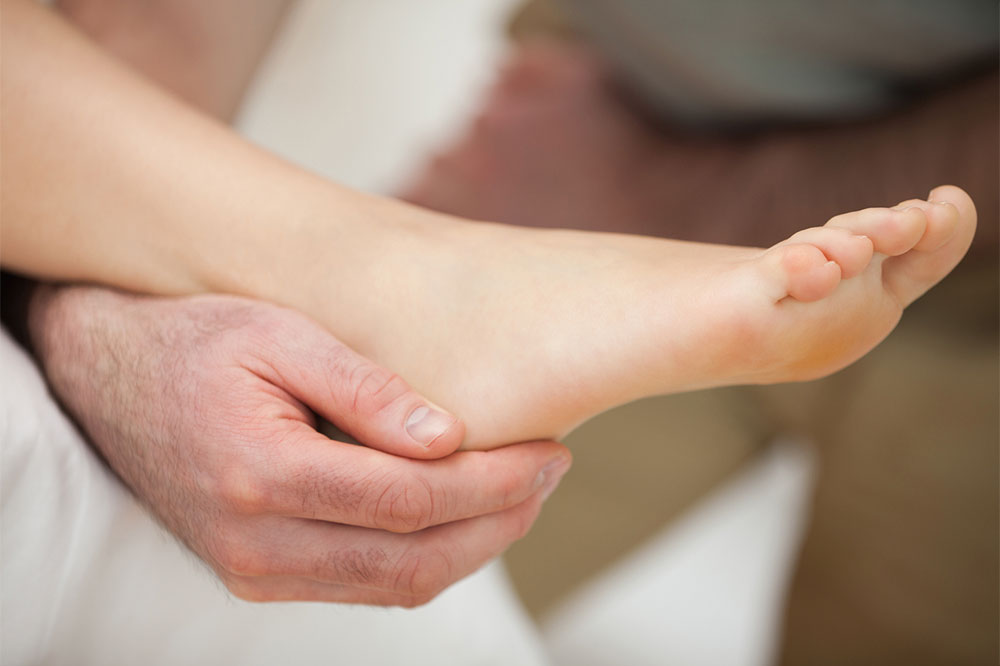
Health conditions that cause ankles to swell
Swollen ankles and feet can be troubling if they have been that way for a long time, and no amount of heat or cold therapy works on reducing the inflammation. There could be several reasons for ankles to be swollen; it could be an injury, pregnancy, excess weight, or an underlying illness that leads to swollen feet as a symptom. Let us look at all the causes of swollen ankles and feet.
Edema
This is a condition in which there is excess fluid trapped in the body’s tissues. This trapped fluid leads to swelling, inflammation, and puffiness of the tissue under the skin near the ankles, feet, and the rest of the leg. This condition can also affect the arms and hands.
Symptoms to look for: Swollen or puffy ankles or feet, stretched or shiny skin, changes in the skin color, stiffness, discomfort, and dents in the skin when you press the affected area.
Edema is usually caused by any or all of these reasons like sitting or standing in the same position for too long, pregnancy, inactive lifestyle, eating too much salty food, or excess sodium levels. It can also be a side effect of certain treatment plans like blood pressure or contraceptive methods, hormone therapy, or even steroids. It is possible that it can also be caused by a blood clot, an infection, an insect sting or bite, a strain, or a sprain. Sometimes issues with kidneys, liver, or heart also have symptoms like swollen ankles.
Diagnosis and treatment
If you have been trying to treat the swelling at home for a couple of days and it hasn’t reduced, it is critical to see a doctor who can give a proper diagnosis and suggest a treatment plan. The condition is treated through its cause, so a health professional will first understand the cause of the swelling and then work on treating that cause. However, here are some do’s and don’ts that can be critical in helping in recovery.
Always raise the legs or the swollen area on a chair whenever possible. A couple of pillows can also be used to elevate the swollen ankles and legs.
It is important to get the blood flowing, so gentle exercises like walking can help improve this blood circulation in the feet and the rest of the body.
It is recommended to wear wide and comfortable footwear to avoid any pain from squeezing and ensure the heel is not too high and the soles are soft.
Always ensure that the feet are washed thoroughly, dried, and moisturized. Any unhygienic practices could lead to infections and complications.
Here are things that should be avoided:
Do not wear socks or shoes that squeeze your feet and ankle. Even skin-tight jeans should be avoided.
Sitting or standing for long hours should be avoided at all costs.
Symptoms that call for an emergency
Immediate response is needed if the symptoms below are observed or swelling worsens.
If the ankle or feet suddenly swells up with no injury preceding it.
If the swelling is severe, painful, and sudden.
If the swollen area feels hot to the touch and is visibly red.
If the body temperature is high and symptoms like shivering are experienced.
If a diabetic patient suddenly experiences swollen ankles and feet.
If you are struggling to breathe or if you feel short of breath.
If there is a pain in the chest or heavy breathing along with some tightness in the chest.
If there is blood while coughing.
These are all extreme symptoms and must be checked out by a health professional immediately to avoid complications.
Pregnancy
Swollen legs and ankles are common during pregnancy because of the changing hormones, the excess pressure on the veins in the legs due to the extra weight of the baby, and natural fluid retention. It is also observed that swollen ankles and feet are more common around the fifth month of pregnancy as the fetus has grown bigger. However, also be sure to get a diagnosis as preeclampsia is a condition observed around the 20th week of pregnancy due to high blood pressure and excess protein in the urine. One of the symptoms is swollen ankles.
Prevention and management during pregnancy
Keep the body temperature cool.
Spend time in the pool to help relax the leg muscles and ankles.
Wear comfortable shoes and avoid heels.
Sleep on the left side.
Sit with your feet raised.
Avoid standing for long periods of time.
Exercise regularly, but ensure the exercises are approved by the healthcare professional and don’t go overboard.
Wearing compression stockings or socks and tights might be helpful.
Always keep your gynecologist in the loop of any new symptoms if the swelling gets too worse.
An ankle may swell for various reasons. Remember the points discussed above to manage swollen ankles.




